|
If you are waking up right now, chances are you have had, what clinicians term, one period of consolidated sleep. That is, you went to bed yesterday evening and awoke the following day - this morning. In most parts of the world - particularly the industrialised world - consolidated sleep is the norm. By and large, our patterns of sleep and wakefulness (known as our circadian rhythm) are governed by two things: the cycle of nighttime and daytime; the daily demands on our time. The former is mandated by the movements of the planets (not much we can do about that), the latter is determined by a multitude of factors, perhaps the most significant being the daily work that we have to do. In a sense, for the vast majority of people, we don’t have much control over this either. The Industrial Revolution and state-sponsored education have tended to organise the daily routines of most people around the world, meaning that - exceptions notwithstanding - we carry out our ‘work’ during one continuous block during the day and sleep in one continuous block at night (if we are lucky). It was not always the case. In fact, until relatively recently your ancestors would most probably have maintained a bi-modal sleeping pattern. They had two sleeps a night. In At Day’s Close: Night in Times Past, Roger Ekirch’s revelatory investigation into the social history of what people around the world do at night, a rich and varied trove of evidence from across the centuries and the globe, suggested that we had a ‘first sleep’ and then a ‘second sleep’. The first sleep began a couple of hours after the sun went down and lasted for 3-4 hours. After an hour or so of wakefulness (more on this in a moment), people went back to sleep for another 3-4 hours. During this period of wakefulness between the first and second sleeps, evidence abounds that people did either what was necessary - chopped wood, prepared food, prayed and such - or what was enjoyable - read, talked with bedfellows, had sex and so on. According to Ekirch, the surprising point in his discoveries is not that this practice seems to have been almost entirely forgotten in the post-industrialised world, but that it was such a commonality - references abounding in plain sight - in the first place. In England, prior to, and even during, the early phases of the Industrial Revolution, records of first and second sleeps are abundant and exist without any attention being drawn to their being in any way unusual. That’s because, according to Ekirch, they weren’t. In 1840, Charles Dickens dropped a ‘casual’ mention into Barnaby Rudge, “He knew this, even in the horror with which he started from his first sleep, and threw up the window…” Ekirch opens his 2001 paper, Sleep We Have Lost: Pre-industrial Slumber in the British Isles, (out of which his book, At Day’s Close: Night in Times Past was developed), with journal notes made by the Scottish novelist Robert Louis Stevenson. These notes, written about his time spent camping and hiking through the Cévennes in France in 1878, describe with great poetry what he calls “the stirring hour” and “...this nightly resurrection” - that interval between sleeps which, even by Stevenson’s time, was largely a thing forgotten to history. It is a poignant opening to a piece of research that ‘rediscovered’ a practice which, to your ancestors, would almost certainly have been the norm. Robert Louis Stevenson takes his 'first sleep' in Cevannes WHY did we sleep twice? There have been suggestions that bi-phasal sleep became lodged in western Europe because of the requirements of early Christianity - monkish orders rising during the darkened hours to recite verses and pray - and that this embedded itself in European Catholicism which, in turn, promoted the same such nightly devotions from all strata of society. According to Ekirch, this can’t be the root of segmented sleep, because the very practice not only predates early Christianity, it existed across the world in areas which were, until relatively recently, untouched by Christian missionaries and religious conquistadors. Just why we took two sleeps at night is a complex question, linked perhaps to the dangers our ancestors (and not even to distant ones at that) faced by sleeping through the night - from predators to criminals. Night could be, it must be remembered, a terrifying time for all, dense as it might have been with frightful superstitions, religious paranoia, and the very real criminals that moved unseen. The night time was literally and metaphorically a time when the disreputable elements of life emerged: “Associations with night before the 17th Century were not good," he says. The night was a place populated by people of disrepute - criminals, prostitutes and drunks.” (Kolovsky, Craig.) Breaking sleep, as unnatural as it may seem to us now, could be fundamental to the survival of our ancestors. Sleep was a much more vulnerable state for our ancestors to have to endure than for most of us today. Unless the moon was visible at night, the darkness of the pre-industrial world would have been absolute. When people actually took to their beds for their first sleep was, in part, also related to the darkness because, as Professor Ekirch plainly stated in Segmented Sleep in Preindustrial Societies:
“As in many preindustrial cultures, sleep onset depended less on a fixed timetable than on the existence of things to do.” Since pre industrial England relied so heavily on the daylight to accomplish these ‘things to do’ - our daily toils - once the night arrived it would have been near-impossible to conduct anything except the least arduous of tasks, such as talking, eating, or sleeping. If the work had been accomplished for the day - in the hours of light during which it was possible to accomplish it - then the timing of the ‘first sleep’ need not have been rigid. However, it cannot be overstated just how utterly devoid of light the night could become in a world before the Industrial Revolution. Unless the moon rendered otherwise, darkness would have been near absolute for anyone who could not afford artificial light - candles, oil lamps and such. And this is where the answer to the question of why we no longer have two sleeps at night is to be found: artificial light. Perhaps the more important question isn’t really why we used to have two sleeps and a ‘break’ but why we stopped the practice. The wealthier classes were perhaps the first to move away from the prehistoric ‘two sleep’ pattern because of their earlier access to artificial light - candles, oil lamps, wood fires etc. The Industrial Revolution forced the proliferation of light sources and the brightness of those sources across the British Isles. Gas lights - never really ubiquitous outside of major urban centres - nonetheless opened up the night to those who had hitherto retreated from it. Once the electric lightbulb, with its powerful luminescence and lower cost, changed the British night from dark to light, the practice of two sleeps quickly faded into obscurity. No more was it necessary to stop work when the sun went below the horizon; no longer was it necessary to fear the night and barricade oneself behind locked doors. In short, people began experiencing the night (for both work and leisure) and sleeping later - to the point where the first sleep became the only sleep. In a very short period of time indeed - perhaps as little as one hundred and fifty years - your ancestors went from a nocturnal pattern of sleep that had endured for millennia whereby we slept and then woke and then slept again, to a consolidated sleep determined primarily by the growth of artificial light. Your ancestors from almost certainly followed the practice of two sleeps. What is perhaps equally important is that, since England was the first country to industrialise, they were also probably the first to abandon the practice. Dr. Elliott L. Watson (Co-Editor of Versus History) @thelibrarian6 Bibliography Ekirch, A. Roger. Segmented Sleep in Preindustrial Societies. (http://www.history.vt.edu/Ekirch/sleep_39_03_715.pdf ) Ekirch, A. Roger. Sleep We Have Lost: Post-industrial Slumber in the British Isles (https://pdfs.semanticscholar.org/5f7d/10e30df23c62edc499ff26e909764e8946ad.pdf?_ga=2.82364371.494877159.1561369868-1007184158.1561369868) Koslofsky, Craig. Evening's Empire: A History of the Night in Early Modern Europe (Cambridge and New York Cambridge University Press 2011)
0 Comments
In short, yes. No matter whether you currently reside in the Americas, Europe, Africa, Australia, or Asia, you are related to royalty. It is a mathematical certainty. You are the product, in a biological and historical sense, of an unbroken line of procreation and survival, dating back in time at least as long as Homo Hominids have existed and, most probably, much, much further back than even that. Your ancestors survived for hundreds of thousands, perhaps millions, of years, so you could enjoy that pizza and this article. It makes sense that, particularly with the rise of genealogy websites and DNA ancestry services, people around the world are increasingly asking one particular question and, perhaps more importantly, able to have this question answered. The question is this: “Am I related to royalty?”. Regardless of the rationale driving this question - whether it be narcissism or practicality (blue blood might make you feel important and it could be very profitable in terms of inheritance rights), the question is a legitimate one - our current identity is bound so intricately (and often messily) with those who carried our blood through the millennia. We all come from somewhere. Where is that somewhere? There is also a romance to the uncovering of an ancestry either steeped in, or merely anointed by, royal blood: taking part in the achievements of our predecessors - bringing pride or infamy - can become, rightly or wrongly, part of our very own myth-making as individuals. When was the last time you told someone proudly of the achievements of your own children? Imagine if you could tell those same people that you were related to the man who overthrew King Richard III of England or the Iceni Queen who punished the Romans so defiantly. Confirmation of existence? Perhaps. Bragging rights? Most certainly. To get back to the question: “Am I descended from Royalty?”. The popular geneticist, Adam Rutherford, in his many works, including A Brief History of Everyone Who Ever Lived, explains the irrefutable mathematics of the situation: there have been ‘only’ about 108 billion Homo sapiens. Taking as his starting point the emergence of what we may call our direct human ancestors (hominids very much like us) 50,000 years ago, Rutherford addresses a common misconception about ancestry: it does not resemble a tree, inasmuch as a tree has separate and distinct branches that extend, in a linear fashion, outwards and away from the trunk. Tree branches may have smaller branches extending outwards from them, but they are always linear - they never rejoin another branch. They exist in isolation from every other branch except the one from which they sprout. This is an impossible scenario, genealogically speaking. As we are all born of two parents*, then for the ‘family tree’ metaphor to be in any way accurate, we would expect every generation that is born to necessarily take itself one branch further away from everybody else (including the original parents and their relatives), genetically and relationally speaking - into isolation. Metaphorically, the branches should only get further and further away from the trunk of the tree, and can only stretch in two directions - backwards and forwards. Some ‘simple’ addition tells us this can’t be true. Take the following as true: You have two parents; your parents each had two parents; their parents each had two parents and so on. Add these together and go back as far as you can. 2+4+8+16+32+64 etc. If you do this and go back a ‘mere’ thousand years, the number you arrive at will be over 1 trillion. That’s 1 trillion people in your direct family tree alone. That number exceeds the sum of all humans that have ever existed - by some way. To extrapolate even further, if there are 8 billion people currently on the planet and they each have 1 trillion people in their own linear family trees, then within the last thousand years there have lived and died more than 8 sextillion humans. That’s 8 followed by 21 zeros. In only the last one thousand years. What if we went back 50,000 years - to the point in time that Rutherford and others see the emergence of Homo sapiens that could be said to correspond, in a behavioural sense, to us today? The mind boggles. And it should. So, what’s happening here and how does this relate to the question in the title? Genealogy should resemble a tangled net rather than a 'neat' tree. You see, the numbers of ancestors that we have increases exponentially as opposed to linearly; it's the difference between calculating 2+4+8+16... as opposed to 1+1+1+1… What this means, and what Rutherford, Mathematicians such as Joseph T. Chang, and Computer Scientists such as Mark Humphrys, understand is that ancestral lineage is not linear at all, it is a complicated mesh of overlapping, shared, repeated, and interconnected relationships. In short, every person on this planet is related, in a genealogical sense, to everybody else. More than this - and this is where things get particularly interesting - we all share common ancestors. Even more than this, we all share the same common ancestor/s! In order that we understand this (and do so in as simple a manner as possible) let’s go back to Africa. The most recent ‘out of Africa’ hypothesis - that all living humans are descended from Homo sapiens who emerged from, and then left, Africa between 200-300,000 years ago - rules out parallel evolution (humans evolving in different geographical locations at the same time). What this means is that, if there is only one geographical and evolutionary source for Homo sapiens, then we must, out of necessity, all be related to that source. One of the first significant elements of the human genome that was sequenced was mitochondrial DNA. Not wanting to get unnecessarily complex, mitochondrial DNA is almost exclusively inherited by children from their mothers. Combine this with the understanding of our geo-evolutionary origin (Africa) then it is an absolute certainty that every living person alive today can trace, through their mitochondrial DNA, their genealogy all the way back to a single female ancestor. We can do something similar with Y-chromosome DNA, which is passed almost unchanged from father to son. And so, in the public imagination we are all descended by an unbroken series of genetic links back to a single woman and a single man: the so-called ‘Mitochondrial Eve’ and ‘Y-Chromosomal Adam’. Mitochondrial DNA can be traced through your female ancesters. Counter-intuitively, these two individuals are unlikely to have been the first humans - they are ‘merely’ the MRCA, or Most Recent Common Ancestor, of all humans alive today. Other humans - probably millions - lived and died without leaving children to contribute to the lineage that would mesh with ours. What is perhaps even more astonishing than this is that, because of the interconnectedness of our species - helped in part by our migrations from village to village, town to town, country to country, and continent to continent - the MRCA of all people living today, probably lived just a few thousand years ago! Now that we have established our messy interconnectedness as Homo sapiens, let’s get back to royalty. Some readers may feel a little cheated by what has just been read above - the rather impersonal and blanket claim that ‘we are all related’. “Where’s the romance in that?”, one might ask. Well, let us get more specific. Using the statistical models of people such as Joseph T. Chang, we can circumvent any feeling that our general genealogical relationship to others is somehow boring, and narrow down our ancestral links to more, let us say, exciting specifics. For example, if we disregard only very recent immigration into Europe, the MRCA of all Europeans is either a man or woman who lived in the very recent past - about 600 years ago. Adam Rutherford goes one step further, demonstrating that almost every single European - and therefore anyone of European descent living in the New World - has royalty in their blood. Specifically, they have the Y-chromosome DNA of Charlemagne - Charles the Great - and/or the mitochondria of four out of his five wives. Charlemagne It is crucial to make note of something - and this is where we depart from statistics and move into history - the number of human beings currently alive that have, to any discoverable degree, documented ancestry, is miniscule. Unless your ancestors enjoyed wealth or significant historical impact, chances are there will be little to no evidence of their existence on this planet. Before the invention of the printing press by Johannes Gutenburg in the 1440’s, the world’s documentation was handwritten, some of which could be painstaking, most of which would be costly. Until the moveable-type printing press proliferated around the world, the fact of the matter was this: regardless of where around the world you lived and died, unless your life was viewed as worthy of documentation by someone with the means and the inclination to do so, it was likely to be forever ignored by posterity. Occasionally, bureaucracy would fortuitously record the lives of common people. For example, the Domesday Book - commissioned by William the Conqueror after his defeat of Harold of Wessex at the Battle of Hastings in 1066 and completed in 1086 - provides historians with a wonderful trove of social history. The ‘Great Survey’ of the people of England and Wales was undertaken for the purposes of taxation - William needed to assert his royal pecuniary rights over the people of his newly conquered lands and, in order to do so, needed to know the levels of wealth and property of all the people occupying these lands. Consequently, though the motive of William of Normandy was to exert his royal control, one important outcome of the Domesday Book was detailed proof of the existence of people who would otherwise have disappeared from the historical record. However, such serendipitous recording of the existence of ‘common people’ was the exception rather than the rule. In most parts of the world, well beyond the invention of the printing press or, indeed, the advent of the Industrial Revolution, the historical record was primarily oral. Unfortunately, oral history often hits the same roadblocks as written history - it mostly records the lives of only those deemed ‘worthy’ of the effort. In a very roundabout way what this means is that, depending on the geographical origins of your antecedents, the socio-economic route by which your ancestors travelled (by and large, an impoverished one), and whether or not they did something worth noting, chances are there is no evidence whatsoever of their existence. Except for you. You are the evidence of their existence. You may be the only evidence. And this brings us back to statistical models…
Since there may be little to no evidence of your genealogical history beyond your most immediate ancestors, we must take refuge in statistics. Ignoring Benjamin Disraeli’s supposed claim that “There are three kinds of lies: lies, damned lies, and statistics”, in this case the mathematics is irrefutable. If you are of European ancestry you are related to royalty. In fact, if you currently reside in the Americas - including the Caribbean and Bermuda - you are, to a high degree of certainty, related to English royalty specifically: “For example, almost everyone in the New World must be descended from English royalty—even people of predominantly African or Native American ancestry, because of the long history of intermarriage in the Americas. Similarly, everyone of European ancestry must descend from Muhammad.” (Chang) To continue, if you live in North America, whether your ancestors left from Plymouth Harbour on the Mayflower in 1620 or fled from Ireland during the potato famine of the mid nineteenth century, they took with them the DNA of royalty. Whether your ancestors were brutally enslaved and transported to the Americas in chains or were native to the land colonised by Europeans, you are related to royalty - whether it be from the royal houses of England, Europe, Africa, Asia or the Americas. It is a statistical certainty. Dr. Elliott L. Watson (Co-Editor of Versus History) @thelibrarian6 Bibliography: Chang, Joseph T. Recent Common Ancestors of all Present-Day Individuals, (Yale University 1999) http://www.stat.yale.edu/~jtc5/papers/CommonAncestors/AAP_99_CommonAncestors_paper.pdf Olson, S. The Royal We, The Atlantic (May 2002) https://www.theatlantic.com/magazine/archive/2002/05/the-royal-we/302497/ British-Australia was established 84,766 days ago (at the time of writing - 23 February 2020). Today, the Commonwealth of Australia has a democratically elected prime minister and a hereditary monarch, Queen Elizabeth II. Her Majesty is represented in Australia by the Governor-General. Unlike today, however, in the late eighteenth and early nineteenth century, power was concentrated in hands of the governor appointed by Britain, resident in Australia. The fifth governor, Lachlan Macquarie, featured in one of the recent GCE / A-Level History examinations. The question required that students analyse his contribution to the development of British-Australia in the early nineteenth century. So, then, what are the key three things that we should know about the man? 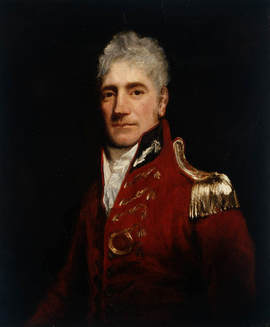 Portrait of Governor Lachlan Macquarie, 1810-1821. Portrait of Governor Lachlan Macquarie, 1810-1821. Lachlan Macquarie in Context New South Wales was established as a British penal colony in January 1788, during the reign of King George III, as the intended repository for the ever-growing number of convicted criminals in Great Britain at the time. Previously the Thirteen Colonies of British North America had been the destination of transported criminals. However, with the loss of America in 1783, Britain was in desperate need of an alternative. British jails were massively overcrowded in the late 18th century, to the extent that decommissioned ships were converted into temporary floating prisons. The alternative to America was some 16,500km from London, rather than the 5,500km to New York. Australia was - in the eyes of the British judicial system - ersatz America. Historian Lawrence James argues: "They (convicts) were to provide the sinews of a new colony that, in time, would profit Britain, which would be preferable to having them idling in prison cells or the hulks." The new ‘pop-up’ penitentiary was populated mostly by convicted felons in its early days. It was initially marshalled by the New South Wales Marine Corps and then quickly relieved by the New South Wales Corps between 1789-1810, whilst being run by a governor appointed from London. Indeed, whilst the American colonists had chafed under the rule of the various British governors before 1776, early British-Australian convicts had virtually no say whatsoever in the governance of the colony. This responsibility rested solely with the Governor, backed by a cadre of Redcoats for muscle. Convicts were in Australia to serve sentences, work and, if they were able to serve the duration of the time spent at ‘Her Majesty’s Pleasure’, gain a small land grant. Into this context entered Lachlan Macquarie. He became the fifth governor of New South Wales, serving between 1809-1821. Arriving some 21 years after the establishment of British-Australia, Macquarie was tasked with developing the colony and ensuring a swift and sustained return to good discipline and order. Indeed, it was not just the convicts that needed correction. The New South Wales Corps themselves had rebelled in 1808. Against this turbulent backdrop, Macquarie commenced his role as the Governor, some six months after setting sail from Britain. What three things should we know? 1) Macquarie built. He took the reins of British-Australia in 1810; this was a turbulent and testing period in the nation’s history. By the time that Macquarie had relinquished his post in 1821, the colony was significantly more stable and prosperous than when he had arrived. The elaborate building works in Sydney were a testament to his grandiose vision for the colony. Moreover, the footprint of Macquarie can still be seen in Australia’s earliest towns. He assiduously nurtured the development of the five ‘Macquarie Towns’ - Castlereagh, Pitt Town, Richmond, Wilberforce and Windsor - which laid the platform for early and future urban development in Australia. These towns were built towards the ‘Blue Mountains’, where sheep farming - one of the primary staples of Australia’s future economy - could take root. This contributed to the increased level of self-sufficiency in terms of food production, reducing Australia’s dependence on foreign imports. By end of Macquarie’s time ‘down under’, there were nearly 300,000 sheep in Australia, which served the white-settlers’ pockets and their bellies well. However, this had a truly devastating impact on the aboriginal population, who found that the sheep devoured the land on which the native kangaroo lived and pushed them into increasing conflict with land-hungry colonial farmers. 2) Macquarie rehabilitated. Historian Niall Ferguson highlights the continuities and the changes between Macquarie’s governorship and those of his predecessors. "Macquarie was every bit as much of a despot as his naval predecessors ... But unlike them, Macquarie was an enlightened despot. To him, NSW was not just a land of punishment, but also a land of redemption. Under his benign rule, he believed, convicts could be transformed into citizens." Governor Macquarie certainly aimed to ensure that the convicts could attain earthly salvation through hard work, obedience and good discipline. For every convict that was able to complete their sentence, a generous grant of 30 acres of land awaited them. Moreover, Macquarie allowed some convicts to undertake legal roles and aimed to improve the awful conditions aboard the penal ships that were used to transport the felons to Australia. 3) Macquarie was a Marmite figure. He certainly did not please everyone. Australia’s reformed criminals no doubt looked upon his munificent land grants positively. In addition, Macquarie’s contribution towards the planning and development of Australia’s early towns is undoubted. That these towns have stood the test of time constitutes Macquarie's enduring legacy. To this end, Macquarie was admired by those who viewed his developmental endeavours as a necessary prerequisite in the process of transition from a dedicated penal colony to a fully functional outpost of the British Empire. However, there were those in London who viewed Macquarie as financially wasteful, a misguided spendthrift and a colonial loose cannon, beyond the reproach or rebuke of his superiors in London. There were those in Australia who viewed Macquarie as being overly lenient on the convicts. His unswerving commitment to the provision of land grants was seen by some as a dangerous threat to the social status-quo and the entrenched privileges of Australia's 'free settlers'. Moreover, the indigenous aboriginal population continued to suffer significantly while Macquarie was governor as little of substance was done to reign in the settlers' lust for land or moderate the concept of terra nullius, which the British applied to Australia. Like Marmite, Macquarie was not to everyone's taste.
Thank you for reading. Feedback is always welcome! Patrick O’Shaughnessy (@historychappy) Co-Editor of Versus History |
Categories
All
Archives
April 2024
|
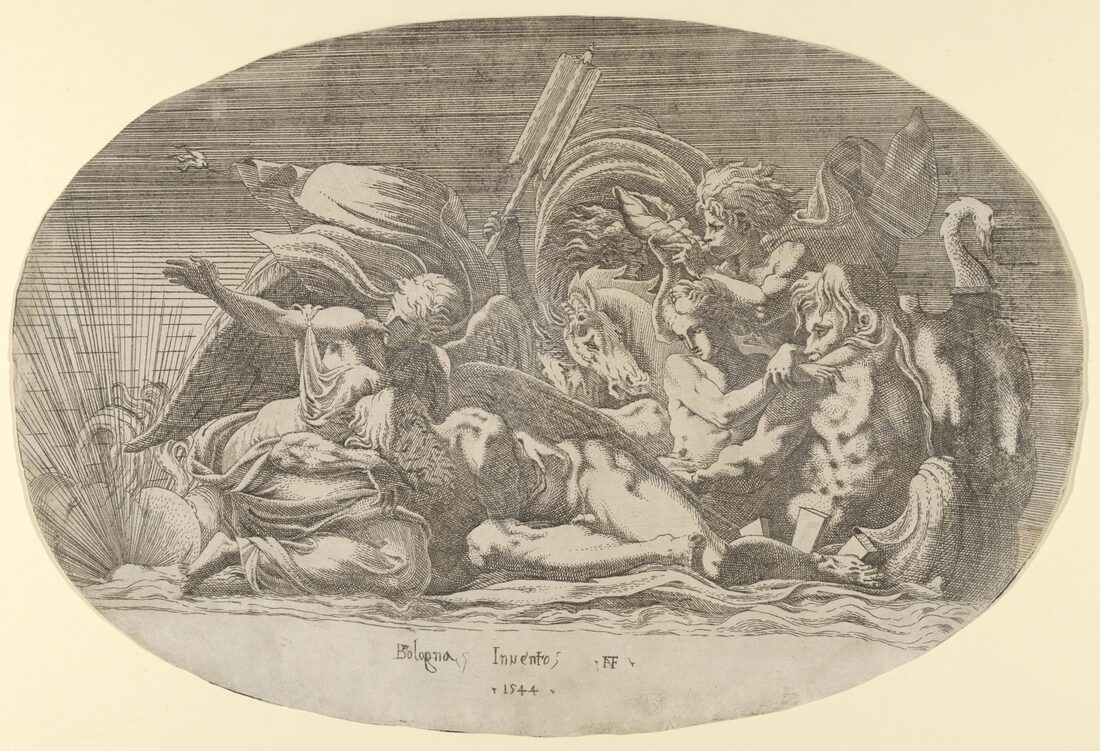


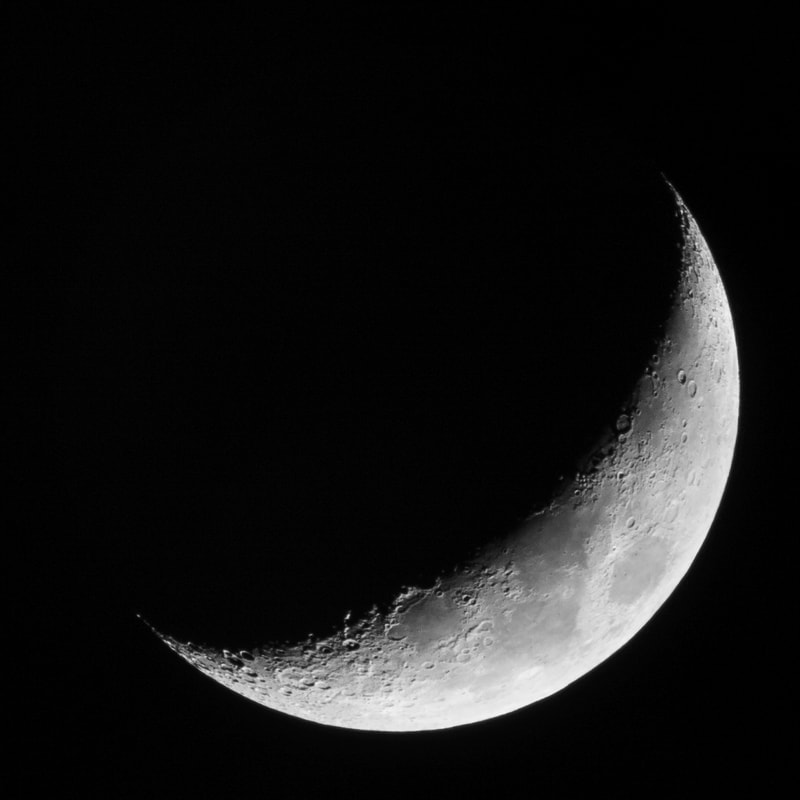



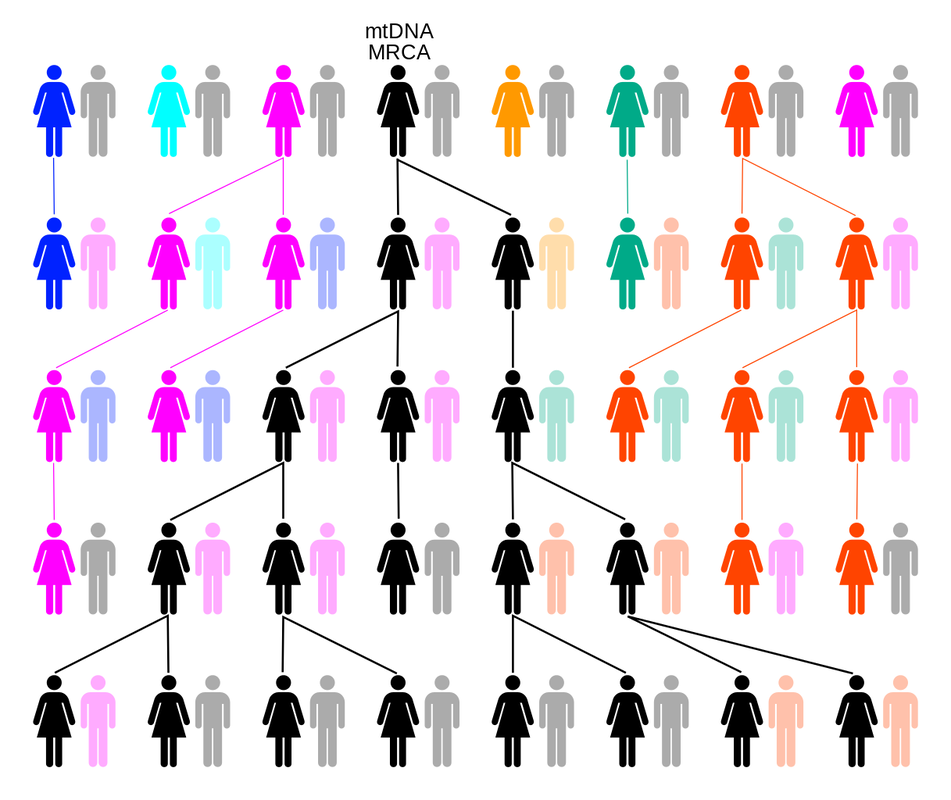
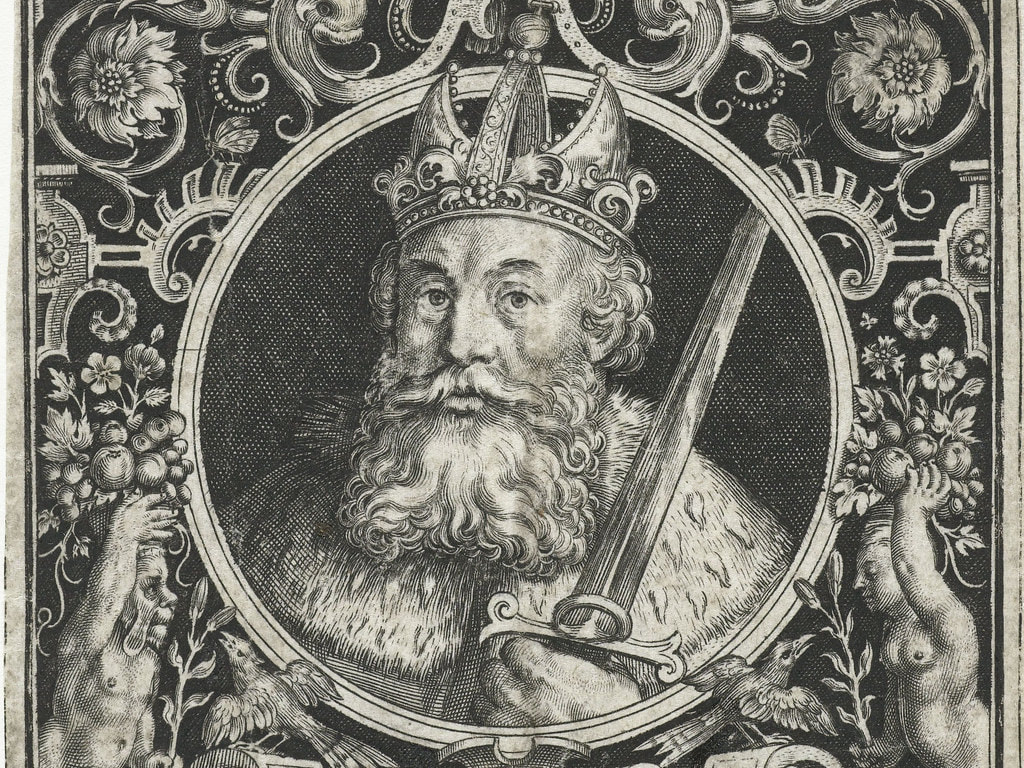

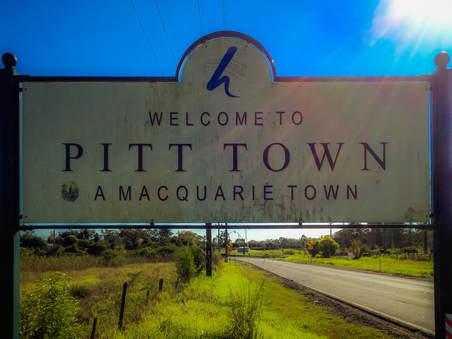
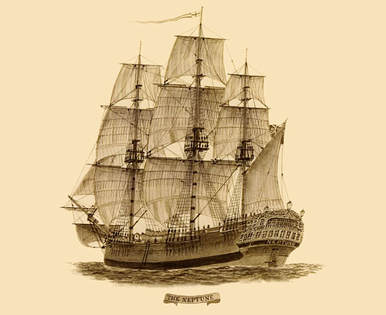
 RSS Feed
RSS Feed